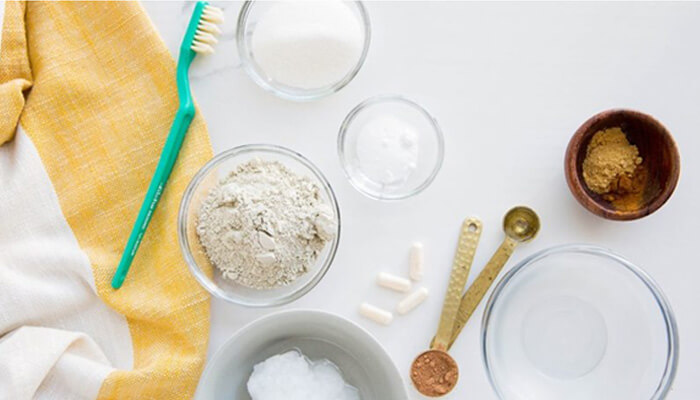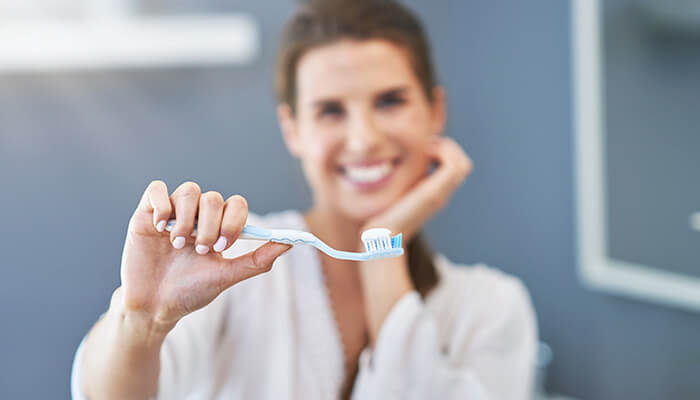When you hit the toothpaste aisle for your next tube, how do you choose which one you buy? Many of us look for brands we recognize, followed by price. What’s on sale is the winner for that shopping trip!
But how often do you check the box and look for certain ingredients before throwing the item into your cart?
The “you get what you pay for” saying doesn’t always apply to toothpaste if there’s a great sale. Yet, you could be wasting money on an ineffective — or worse, dangerous — product.
As you’re browsing the aisles in search of your next tube of toothpaste, use these best and worst ingredients to help you improve your oral health. You might find that your favorite brand isn’t doing as much as you thought!
1. What to Stay Away From
We often trust too much in the idea that a product allowed to be on the shelves of a grocery or department store must be safe. The truth is that many of the commercial toothpaste (and other items) sold online or on shelves contain ingredients known to be harmful and/or downright toxic.
Since you’re putting toothpaste directly into your mouth and giving it to your loved ones to use, this is a serious thing to consider.
Would you normally let your children put pesticides in their mouths? Probably not, yet that’s what happens when they use toothpaste with triclosan in it. This ingredient is a pesticide and is known to disrupt hormones, a significant concern for children as they get older and go through many natural hormonal changes.
However, triclosan is only one of many ingredients to avoid. Keep this short list of things to avoid in mind as you narrow down your next brand of toothpaste:
1. Artificial colors, as they serve no purpose other than attracting your attention and have been linked to ADHD in children;
2. Sodium Lauryl Sulfate (SLS) can cause canker sores;
3. Titanium dioxide is an ingredient designed to whiten toothpaste but poses safety risks when used orally;
4. Ingredients like activated charcoal, which are highly abrasive and damage tooth enamel and sensitive gum tissue;
5. Glycerin is a non-toxic ingredient that shouldn’t be used in the mouth because it strips the body’s natural saliva and leaves behind a film that attracts bacteria.
6. Artificial sweeteners are another toxic ingredient for toothpaste since they may cause tooth decay and other health problems.
7. Propylene glycol is a solvent that can irritate the gums and cause mouth sores.
It can be difficult to find a toothpaste that doesn’t have these ingredients in it. If you have to settle for a brand that does include some of them, you should still keep away from the more toxic products. If you need assistance, you can consult your trusted dentist to advise you about suitable products for your teeth and overall dental health.
2. Ingredients to Include
You know what to avoid, but what makes up the ingredients in the preferred toothpaste? If you want to make your own toothpaste or shop for a more natural yet effective product, certain elements improve the impact you get from regular brushing.
For instance, coconut oil boost your gut microbiomes, helping to prevent unhealthy bacteria in the mouth. And chocolate (using natural cacao beans, not sugar replacements) is a safe way to remove surface stains and break up the filmy residue on your enamel.
Some products use bentonite clay, a mineral-rich substance that polishes your teeth and reduces acidity. This ingredient also promotes balanced minerals in your enamel and encourages remineralization in damaged teeth.
You know that toothpaste shouldn’t have sugar or artificial flavoring in it, of course, but that doesn’t mean that it can’t taste good. Xylitol is an ingredient that reduces bacteria and improves the flavor of toothpaste. Chlorhexidine gluconate is another good toothpaste ingredient that helps kill bacteria and prevent plaque buildup. It’s often used by people with gum disease.
Finally, baking soda in toothpaste is a good way to neutralize the acids in your mouth and maintain the right pH levels. Acids attack the enamel and cause decay, but baking soda is highly alkaline without being overly abrasive.
With all that said, choosing a toothpaste that contains the best ingredients for your oral health is essential. However, finding the right toothpaste for your situation can be challenging with various products available. You need to consider some things to ensure you pick one that’s effective, gentle, and safe. For example, look for toothpaste with the American Dental Association (ADA) seal of approval. This means that the ADA evaluated the product and found it safe and effective.
If you have sensitive teeth, search for toothpaste labeled “sensitive” or “gentle.” This toothpaste often contains ingredients that help to protect your teeth from sensitivity. Also, if you have gum disease, talk to your dentist about a toothpaste specifically designed to treat gum disease.
3. Caring for Your Teeth Beyond Toothpaste
Your oral hygiene regimen begins with toothpaste, but it goes well beyond this all-important step.
If you want to ensure you’re caring for your teeth as best as possible to avoid future painful and expensive problems, you need to add more to your routine.
Your daily oral health practices should include brushing and flossing at least twice a day (in the morning and before bed). Mouthwash is a good way to rinse out the bacteria and plaque you may have missed with your toothbrush and flosser.
Visit your dentist regularly for exams and professional cleanings. They’ll let you know if they see any potential issues before they become major concerns.
However, calling an emergency dentist as soon as possible is essential if you have a broken or knocked-out tooth or experience severe pain or gum bleeding. They can assess your situation and provide the necessary treatment to relieve pain and prevent further complications.
On the other hand, if you have a sleep disorder like bruxism, where you grind your teeth and clench your jaws, talk to your doctor about fixing the cause of the problem. In the meantime, use a night guard to reduce damage to your enamel.
Your insurance may cover this oral appliance, as discussed in this article by JS Dental Lab, or you can get an affordable one custom-made for your teeth.
Conclusion
You wouldn’t normally eat things like pesticides and soap, but these ingredients are common in many household toothpaste products. Skip the dangerous elements on this list, and look for healthy additives in your next tube of toothpaste.



